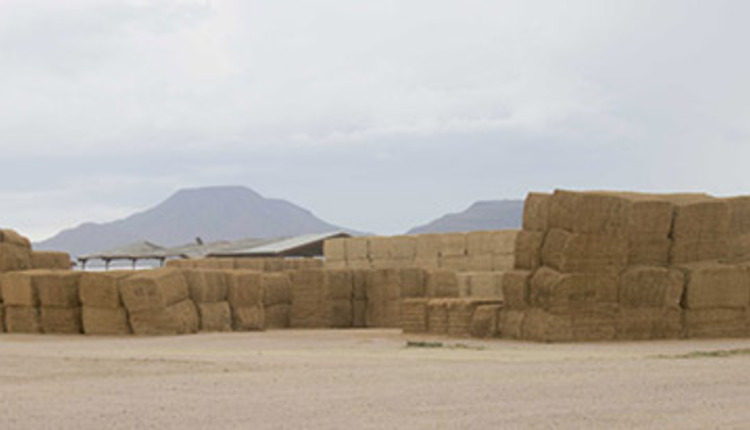
- "The Western states were up 74 percent for May 1 hay stocks in 2015 compared to 2014. The fact that we came into the year with more hay was a big factor (for the lower hay prices)."
- "Though acres of alfalfa were down 2 percent in the West, some states like Idaho, Utah and others had higher production because of higher yields."
- "If you look at dairies, not only in California but in Idaho and other parts of the West, they're feeding less alfalfa hay. This trend has been going down since 2003. In California, it was down to about 8 pounds per day during the second quarter (of 2015)."
- "With the price of rolled corn coming down, we have seen more concentrate in the ration. In California during the first half of 2015, they (dairy producers) fed about 1 pound more of grain than they did last year."
- "Milk prices (overbase) dipped to $14 per hundredweight in early 2015 in California with similar trends in Idaho and Washington. Dairies in the West were still under water during the first half of 2015 with respect to the milk cost of production."
- "The price spread between Supreme and Fair alfalfa hay has continued to be wide. Though dry cow hay prices have come down to within $30 of wheat straw, many dairies have not seen fit to substitute alfalfa for straw."
- "Dairies are feeding other commodities. I recently had a report of almond hulls being delivered to the dairy for $110 per ton."
- "The (hay) market can't be blamed on a big drop in cow numbers. It really hasn't happened in 2015. California is the only state that's down a little bit, the other states are up (in cow numbers)."
- "Some people blame the reduced milk production in California on feeding lower quality hay. A few dairy producers I've talked to say that's not true; they're feeding the same quality as they always have."
- "From January through September, even with the port slowdown earlier this year, we've exported 5 percent more hay than a year ago. China had a big influence with exports up 30 percent from last year. Japan is down about 10 percent."
- "All indications for 2016 are that alfalfa acres in the West will be down. California could be down the most of any state as there are more alternative crop options like almond trees."
Hoyt finished his presentation by saying that predicting the 2016 alfalfa hay market was difficult — the hardest he had encountered in his 45 years of being associated with the alfalfa industry. He said it was nearly impossible to get a handle on demand given the current large inventories of feeder hay on farms.
"Some feel the large inventories may last past 2016. The best demand will be for the higher-quality hay," noted Hoyt. He said that a trend to watch is for more hay to be shipped into California from other states as Golden State growers look to more profitable crop alternatives than alfalfa.
